SPOILER WARNING The following notes give away some of the plot.
A skilfully made and disquieting film, Benny’s Video is also unusually oppressive. Director Haneke has described the trilogy of which this film is the second part (The Seventh Continent, made in 1988. was the first) as ‘reports on the progressive emotional glaciation of my country’. Polemic might be a better word than report, since the story of Benny works itself out as if illustrating a thesis. Benny could be a case study. His family is well off; both parents work and he is largely left to his own devices. Contact between parents and son is minimal and Benny spends his spare time watching violent action movies and listening to speed metal – he is even shown eating a McDonalds. Haneke makes it clear that Benny is not abnormal; like many other kids, he is emotionally stunted, hooked on cheap, manipulative imagery.
The situation thus set up, we see the results. Benny might be an expert in violent films and in operating gadgetry, but he has no idea how to talk to the girl he eventually kills. It is not too outlandish to view Benny’s turning to the gun as a way of sustaining communication, as a macabre chat-up line. Once he has the gun in his hand – and we are surely meant to note the influence of the violent films he has absorbed – he advances the action in the traditional way. He later explains to his father that he shot the girl ‘to see what it’s like.’ The impact of real pain genuinely shocks him and he is driven to finish the job by an urge to stop the hurt. He later films the corpse and himself, perhaps in an attempt to make the act as remote as the deaths he is accustomed to seeing on screen.
Compared to other recent films examining the relationship between ‘real’ violence and images of it, Benny’s Video is relatively straightforward. The film-within-a-film structure of Man Bites Dog, for example, renders voyeurism problematic. Haneke, however, makes more basic connections: the films Benny watches have had a damaging influence; the camcorder he uses has replaced ‘real’ experience. However, this simplistic determinism is realised by expertly controlled technique. There is little light in the film, either literally – skies and places are grey, Benny’s room is black – or in the relentlessly humourless tone. The settings are all claustrophobic: Benny’s bedroom in particular gives the impression of being a sealed area. The only escape into light and space is the unreal one brought about by Benny and his mother’s flight to Egypt, partly recorded on video. The overall effect is that of a narrow tunnel along which the plot guides us with grim, remorseless logic.
Another significant feature of Haneke’s approach is his refusal of spectacle. Two of the most effective and chilling scenes happen off-stage. We only hear the girl dying and being shot, while Benny runs across the picture; and his parents’ incriminating conversation, second time around, is played over a shot of Benny’s room, the location of the listening camcorder. Benny and his video are the most graphic example of perverted relationships in a film that is as much social critique as examination of the habits and behaviour of an adolescent influenced by certain sorts of imagery. Haneke, who until
The Seventh Continent worked in television and the theatre, is preoccupied with the way communication can be replaced by exchanges of money and consumption. In fact, it is in the camera’s repeated focusing on cash changing hands – as well as in the plot’s thudding demonstration of Benny quickly learning from his sister’s money-spinning plan – that Benny’s Video is least subtle. Benny’s parents are seen as representatives of this corrupt order, and the movie exacts revenge by chewing them up with a dramatically satisfying force. After the murder, Benny’s attempt to publicly mark himself as a wrong-doer by shaving his head and having himself dismissed from school is undermined by his parents’ erasure of what happened. In the final twist, with the camcorder getting the last say in the replaying of the parents’ taped conversation, it is Benny who asserts the reality of the killing and reinstates some moral authority.
Robert Yates, Sight and Sound, September 1993
Benny’s Video
Director: Michael Haneke
©: Wega-Film, Bernard Lang
Production Companies: Wega-Film, Bernard Lang
World Sales: Christa Saredi
Producers: Veit Heiduschka, Bernard Lang
Production Administrator: Christa Preisinger
Production Managers: Michael Katz, Gebhard Zupan
Production Manager (Egypt Unit): Nabil Shazli
Switzerland Team Production Manager: Anne-Catherine Lang
Unit Production Manager: Christian Wolf
Unit Production Managers (Egypt Unit): Afaf Fawzi, Alfred Strobl
Production Assistants (Egypt Unit): Sameh Said, Pierre Syoufi
Assistant Director: Hanus Polak
Script Supervisor: Johanna Teicht
Screenplay: Michael Haneke
Director of Photography: Christian Berger
Assistant Photographers: Bernhard Pötscher, Mike Huber
Lighting: Nicolas Cortolezis, Roland Heinrich, Michael Lang, Stefan Pochlatko
Video Supervisor: Gerhard Stüttler
Stills Photography: Peter Scheiblin
Special Effects: Willi Neuner
Editor: Marie Homolkova
Assistant Editors: Andreas Prochaska, Marie Haider
Production Designers: Christian Schuster, Friedrich Martan
Set Decorator: Christoph Kanter
Prop Buyer: Peter Ecker
Standby Props: Robert Köstl, Hans Wagner
Stage Construction: Robert Weiland
Costumes: Erika Navas
Wardrobe: Bettina Leidl, Susie Meneghel, Lydia Polak
Music: Johann Sebastian Bach *
Sound: Karl Schlifelner
Sound Assistant: Eduard Hofmann
Sound Assistant (Switzerland Unit): Andreas Sigg
Sound Effects: Mel Kutbay
Cast
Arno Frisch (Benny)
Angela Winkler (mother)
Ulrich Mühe (father)
Ingrid Strassner (young girl)
Stephanie Brehme (Evi)
Stefan Polasek, Christian Pundy, Max Berner, Hanspeter Müller, Shelly Kästner
Austria-Switzerland 1992©
109 mins
Digital
*Uncredited
SIGHT AND SOUND
Never miss an issue with Sight and Sound, the BFI’s internationally renowned film magazine. Subscribe from just £25*
*Price based on a 6-month print subscription (UK only). More info: sightandsoundsubs.bfi.org.uk

BFI SOUTHBANK
Welcome to the home of great film and TV, with three cinemas and a studio, a world-class library, regular exhibitions and a pioneering Mediatheque with 1000s of free titles for you to explore. Browse special-edition merchandise in the BFI Shop.We're also pleased to offer you a unique new space, the BFI Riverfront – with unrivalled riverside views of Waterloo Bridge and beyond, a delicious seasonal menu, plus a stylish balcony bar for cocktails or special events. Come and enjoy a pre-cinema dinner or a drink on the balcony as the sun goes down.
BECOME A BFI MEMBER
Enjoy a great package of film benefits including priority booking at BFI Southbank and BFI Festivals. Join today at bfi.org.uk/join
BFI PLAYER
We are always open online on BFI Player where you can watch the best new, cult & classic cinema on demand. Showcasing hand-picked landmark British and independent titles, films are available to watch in three distinct ways: Subscription, Rentals & Free to view.
See something different today on player.bfi.org.uk
Join the BFI mailing list for regular programme updates. Not yet registered? Create a new account at www.bfi.org.uk/signup
Programme notes and credits compiled by Sight and Sound and the BFI Documentation Unit
Notes may be edited or abridged
Questions/comments? Contact the Programme Notes team by email

